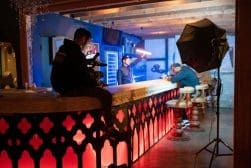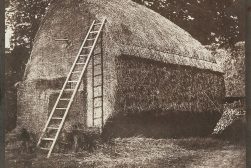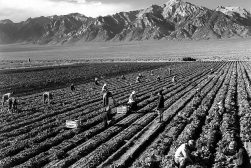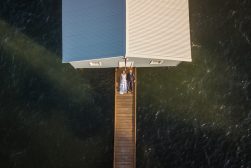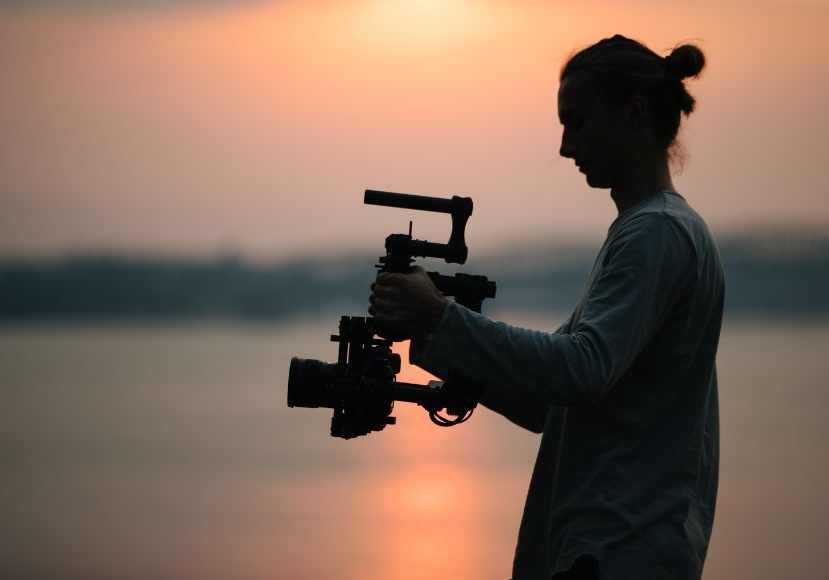
Using Medium Shots in Films (+ Video Examples)
Dive into the versatile world of medium shots in films, understanding their significance and techniques to enhance cinematic storytelling.
When it comes to cinematic framing, medium shots in films strike a delicate balance between the characters and their surroundings.
They allow viewers to see the characters’ expressions and actions while also offering glimpses of the setting, thereby enhancing the visual narrative.
Medium shots are among the most popular camera shots in media due to their versatile and timeless quality.
When characters interact in a medium shot, viewers can easily follow the dialogue and dynamics between characters.
In this article, we’ll discuss everything you need to know about medium shots in films.
We’ll cover the types of medium shots, their purpose, and examples in popular films.
Table of Contents
What Is a Medium Shot in Film?
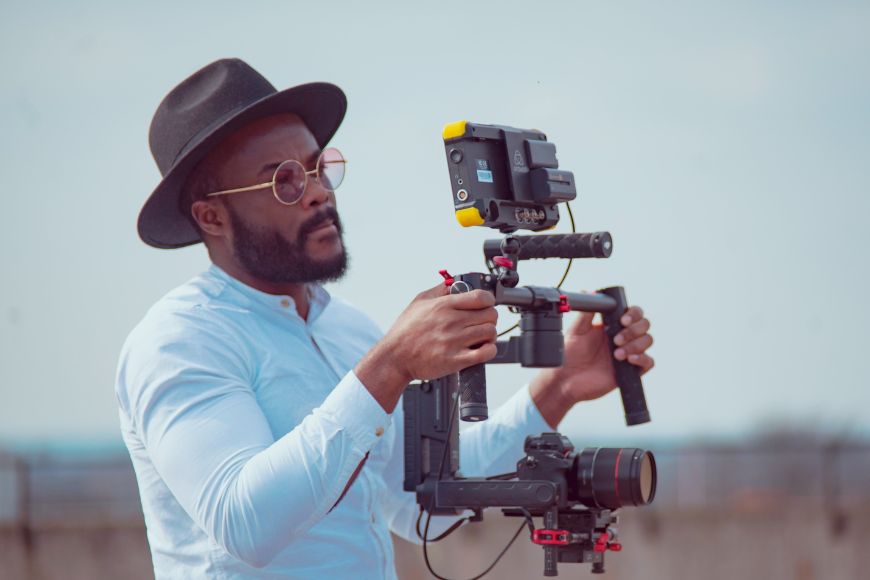
A medium shot (MS), also known as mid-shot or waist shot, is a type of camera shot that captures one or more subjects from approximately waist level up to the top of their head.
It’s often used in scenes where characters are interacting with each other, allowing viewers to see the characters’ expressions and body language.
It’s also used in interviewers or when the subject delivers information, news presenter-style.
Types of Medium Shots
Medium shots in media come in multiple variations, with the most common being:
Medium Close-up Shot
This type of shot falls between a close-up shot and a medium shot.
It’s taken from the waist up and focuses on the characters’ facial expressions and emotions.
It works well for intimate moments and reactions.
Medium Long Shot
Also known as the ¾ shot, American shot, or Cowboy shot, this shot shows the character from the head to just above the knee, where a cowboy’s gun holster typically sits.
It provides an almost complete view of the character, emphasizing posture and body language.
Two-shot
The two-shot frames two characters together in the same frame, either side by side or facing one another. It offers insight into the dynamics between the two characters.
Over-the-Shoulder Shot
The over-the-shoulder shot is a shot wherein the camera is positioned behind one character, usually over their shoulder, while showing the other character in the foreground.
This technique is used to enhance perspective and engagement in dialogue scenes.
It emphasizes the characters’ connection or implies one character’s intrusion on another’s space.
High-angle Shot
Captured from a position above the subject, a high-angle shot makes the character appear smaller and more vulnerable, emphasizing power dynamics within a scene.
It’s used to convey a sense of submission, weakness, or helplessness in a character.
Low-angle Shot
Conversely, the low-angle shot is taken from below the subject.
It’s used to make characters appear taller and more imposing to convey their strength, confidence, or authority.
Filmmakers employ this technique to intensify dramatic moments, especially during confrontations.
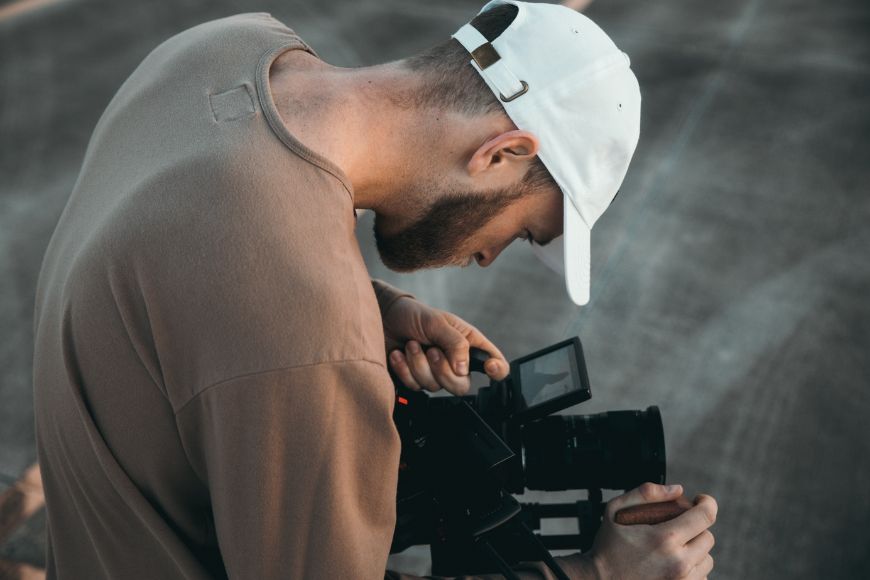
Point-of-View Shot (POV)
In the POV shot, the camera is placed in the perspective of a character so the audience sees what the character sees.
It essentially lets the audience “become” the character, creating a sense of empathy and identification.
Group Medium Shot
Framing a group of three or more characters, this medium shot displays the interactions and relationship dynamics of a group.
Why Use Medium Shots in Film?
To quote director Jacob Reed, medium shots are one of the most utilitarian shots in film.
It’s great for dialogue and conversations, allowing the audience to familiarize themselves with the characters and environment without getting too close or too distant.
Here are some of the biggest reasons why medium shots in film are used:
Balances Detail and Composition
Medium shots are favored for their ability to strike a balance between getting up close and providing context.
Since they capture the characters from approximately the waist up, they highlight character detail and surroundings at the same time.
They show both the actors and the context of their world.
Enhances Body Language
Wide shots don’t detect subtleties in body action, whereas close-up shots cut them off completely.
Medium shots offer just the right distance; they highlight facial expressions, gestures, and emotional exchanges.
Conveys Information
Filmmakers use medium shots to convey information without resorting to zooming in too closely or cutting to a different scene.
They’re useful for revealing props, objects, or elements within the frame that are relevant to the plot structure or character development.
Captures Movement
As part of the storytelling process, actors often interact with pros and their surroundings.
Medium shots are a director’s choice for such moments, allowing them to place equal emphasis on the characters and the environment they’re in.
Allows for Smoother Transitions
Cutting directly from wide shots to close-up shots can be disorienting to viewers.
Medium shots serve as a transitional bridge between other shot types, ensuring a smoother and more coherent shift in perspectives.
Shows Costume Details
Medium shots showcase costume details in a way long shots and close-up shots can’t achieve.
If the character wears ragged or torn-apart clothes, for example, it’s in the medium shot that the audience truly gets a sense of the wear and tear, as well as the narrative implications of their appearance.
Establishes Equality
Medium shots, particularly two-shots and medium close-ups, are often used as emotional and visual equalizers.
Whether it’s a heartfelt conversation between friends or a confrontation between rivals, the medium shot signifies that both characters hold equal weight in the scene.
Examples of Medium Shots in Film
Here are some excellent examples of medium shots in film:
Heat: Restaurant Scene
The iconic restaurant scene in Heat, directed by Michael Mann, captures a simmering back-and-forth conversation between Neil McCauley and Lieutenant Vincent Hanna.
It showcases how over-the-shoulder shots and medium close-ups can be used to communicate the shifting interplay and dynamics between two characters.
Lost in Translation: Bob and Charlotte Meet
In Sofia Coppola’s romantic comedy-drama Lost in Translation, the meeting between Bob and Charlotte relies on two-shots and over-the-shoulder medium close-ups to convey the delicate beginnings of a profound relationship.
Bathed in the soft, hazy ambiance of a hotel bar, Bob and Charlotte are positioned within the frame, sharing the same physical space but still existing in a world of their own.
The camera captures the nuances of their body language, the subtle shifts in posture, and the occasional glances they exchange.
Pulp Fiction: The Bonnie Situation
In Quentin Tarantino’s Pulp Fiction, the “Bonnie Situation” scene stands as a prime example of how medium shots are used to convey emotions, heighten tension, and enhance storytelling.
In the scene, the characters—Jimmie, Vincent, and Jules—are dealing with the consequences of a dead body in the garage.
The scene unfolds in the confined space of a kitchen, panning back and forth between Jimmie, who’s visibly distressed by the situation, and Vincent and Jules, standing side-by-side.
As Jimmie warms Vincent and Jules about the impending arrival of his wife Bonnie, medium shots reveal the tension and unease in the room.
Jimmie’s furrowed brows, Vincent’s casual indifference, and Jules’ anxious glances are all conveyed through these medium shots.
The Godfather: Opening Scene
In the opening scene of Francis Ford Coppola’s The Godfather, Amerigo Bonsera sits on a chair in a dimly lit room of the Corleone household, pleading with Don Vito Corleone to avenge his daughter.
In the shot, you can see the beads of sweat on his forehead, hear the tremble in his voice, and the way he averts his eyes in deference to the Don.
The camera then transitions to an over-the-shoulder shot as Don Vito Corleone speaks.
The Searchers: Cowboys vs. Indians Scene
John Ford’s classic Western Film The Searchers showcases the masterful use of medium shots to drive the action.
The shots place the audience amid the battle, following every move and strategy of the characters.
Through the medium shots, you can see the characters’ determination, fear, and resolve as they battle against their opponents.
Mastering Medium Shots: Tips and Tricks for Filmmakers
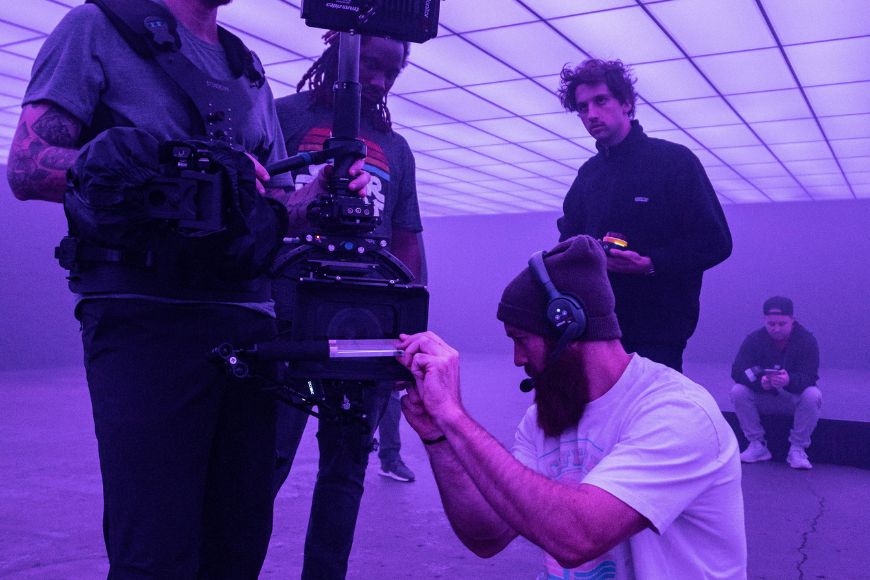
When shooting a medium shot, follow these tips to create a more impactful scene:
Leverage Medium Shots in Dialogue Scenes
Medium shots are best used in moments of dialogue, as they show the audience the characters’ facial expressions and body language while they interact.
Camera Lenses Matter
The camera lens you choose can affect the medium shot’s depth and perspective.
Longer lenses make the background appear compressed and less detailed, while wider lenses make the background appear larger and more expansive.
Limit to Two to Three Subjects
Medium shots are best suited for a limited number of subjects.
By limiting the characters to two or three per shot, the audience can focus on their interactions, expressions, and body language without feeling overwhelmed with too much visual information.
Center Subjects for Emphasis
Position your subject(s) in the middle of the frame when you want to highlight their presence as a central focal point.
Limit Camera Movement
Often, medium shots involve limited camera movement. Excessive camera movement within a medium shot can disorient the audience and make it difficult to focus on the subject.





